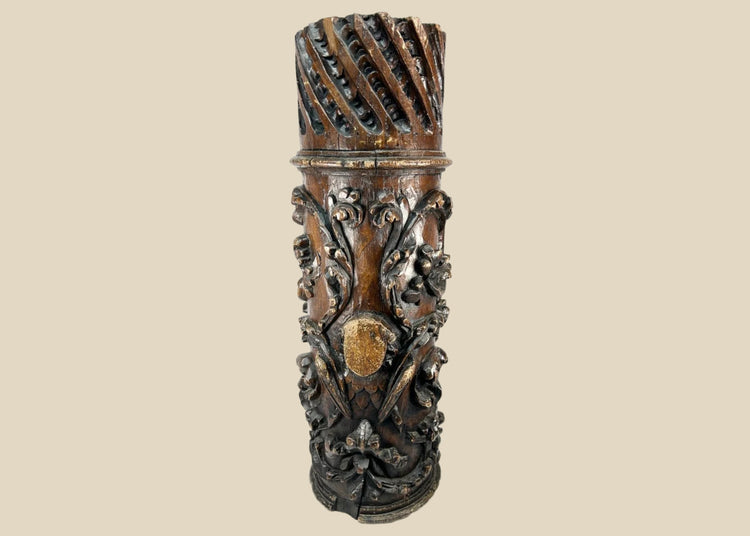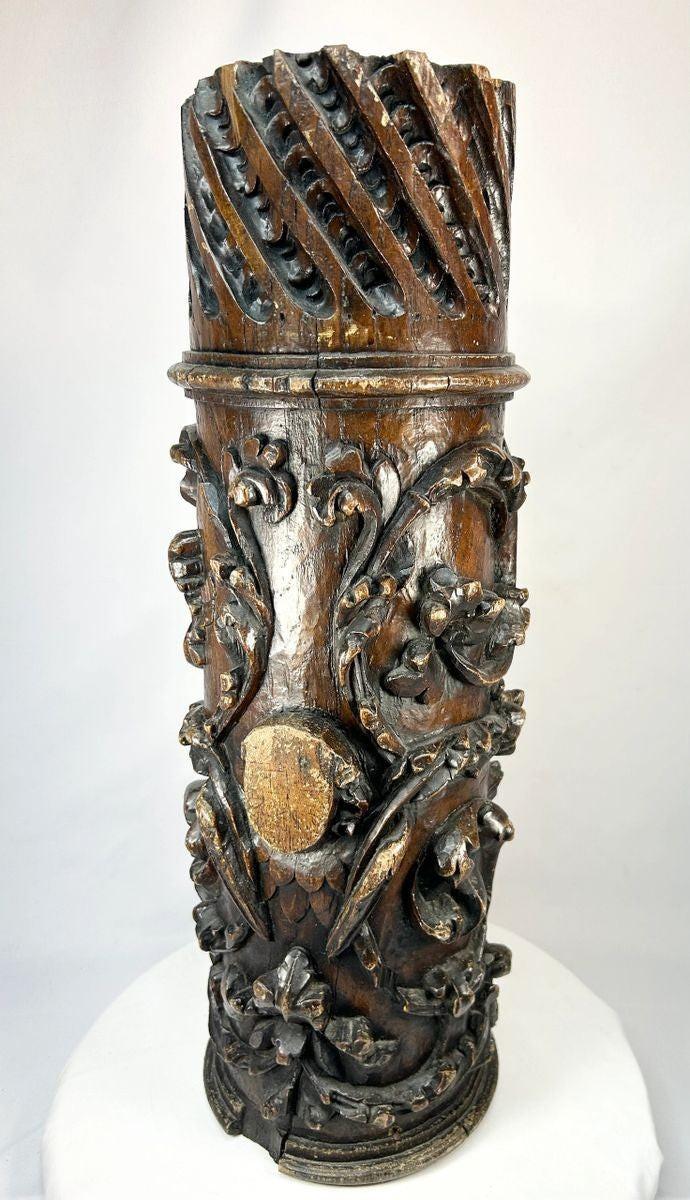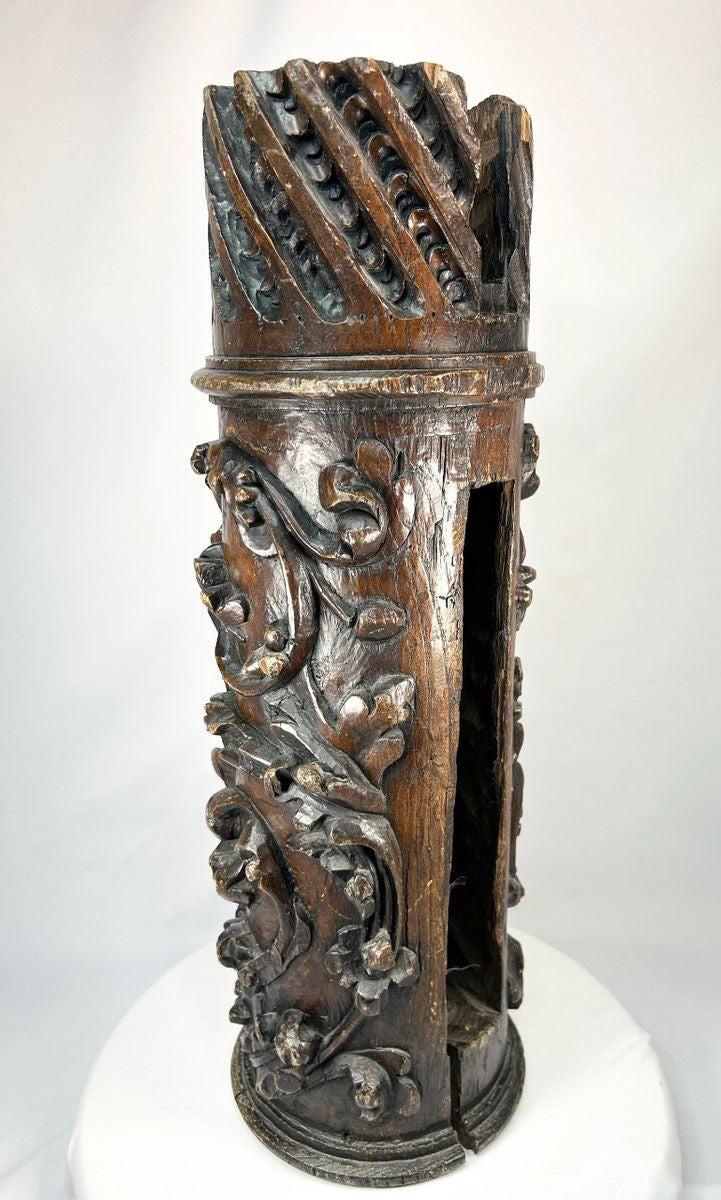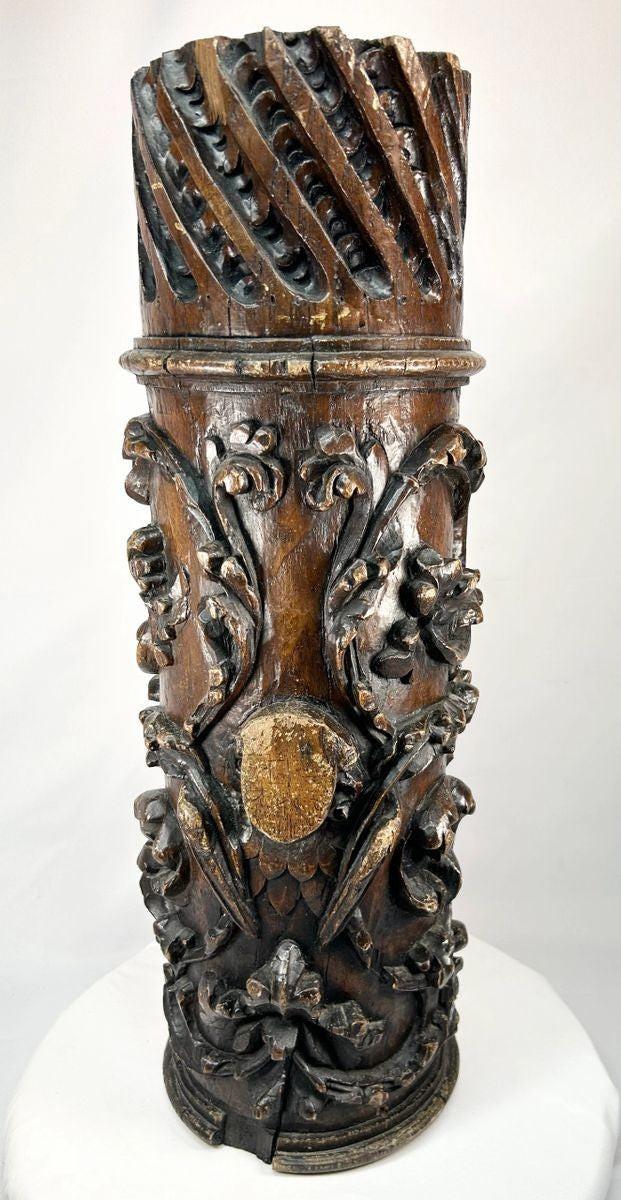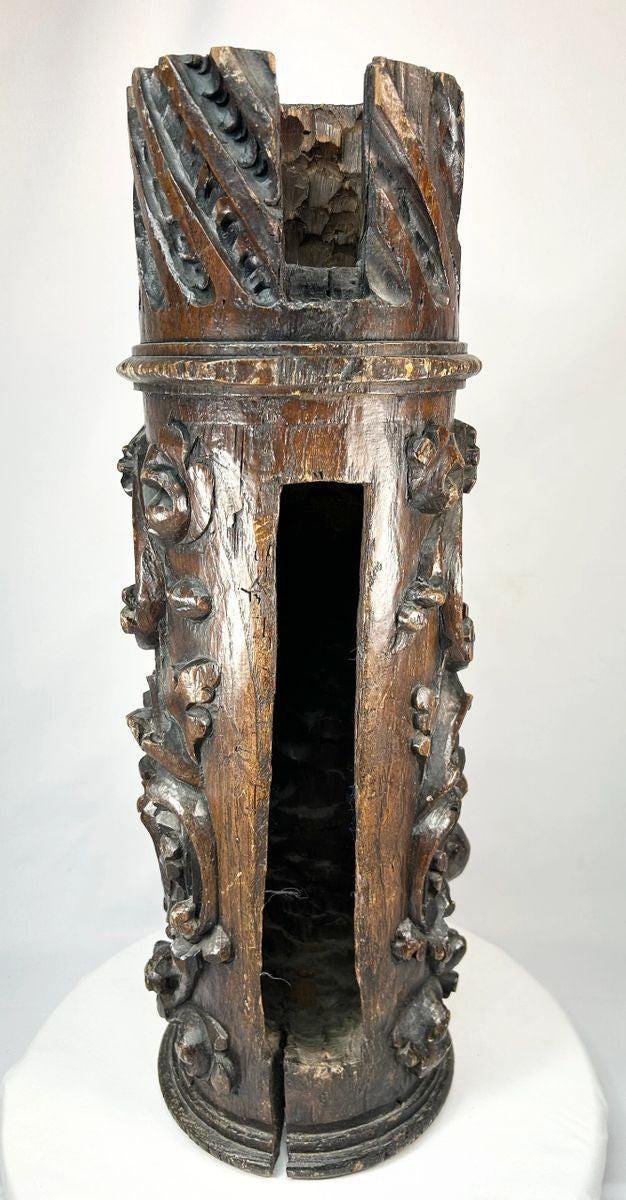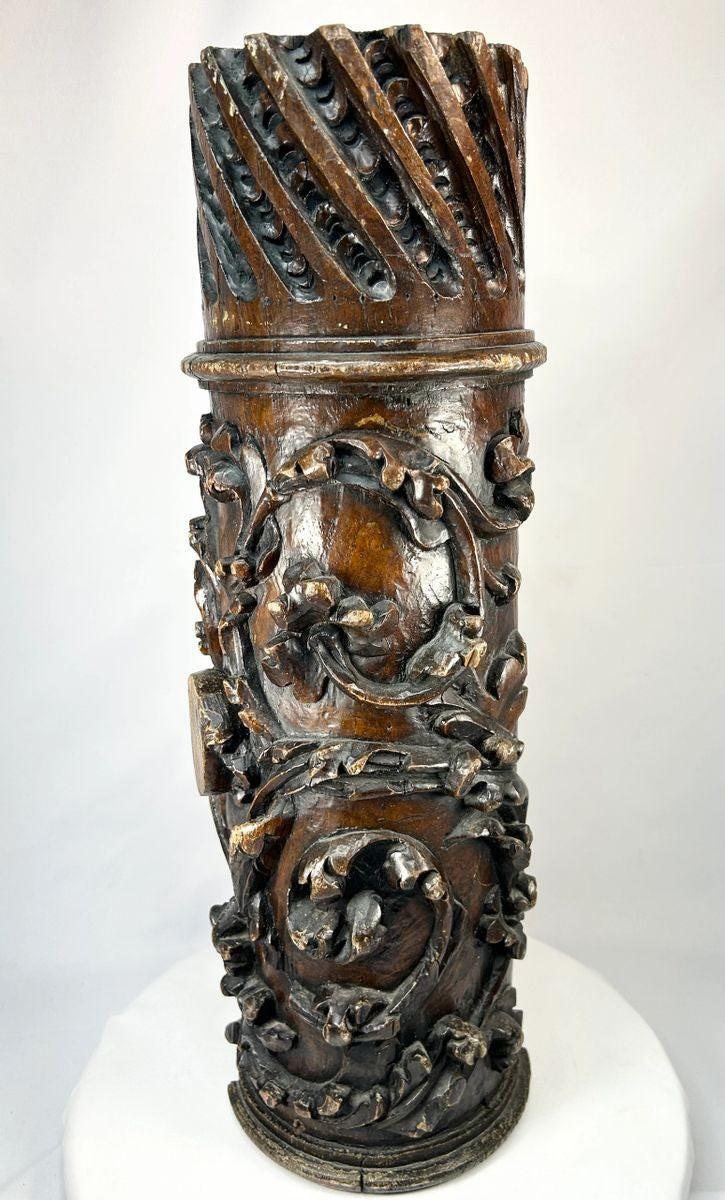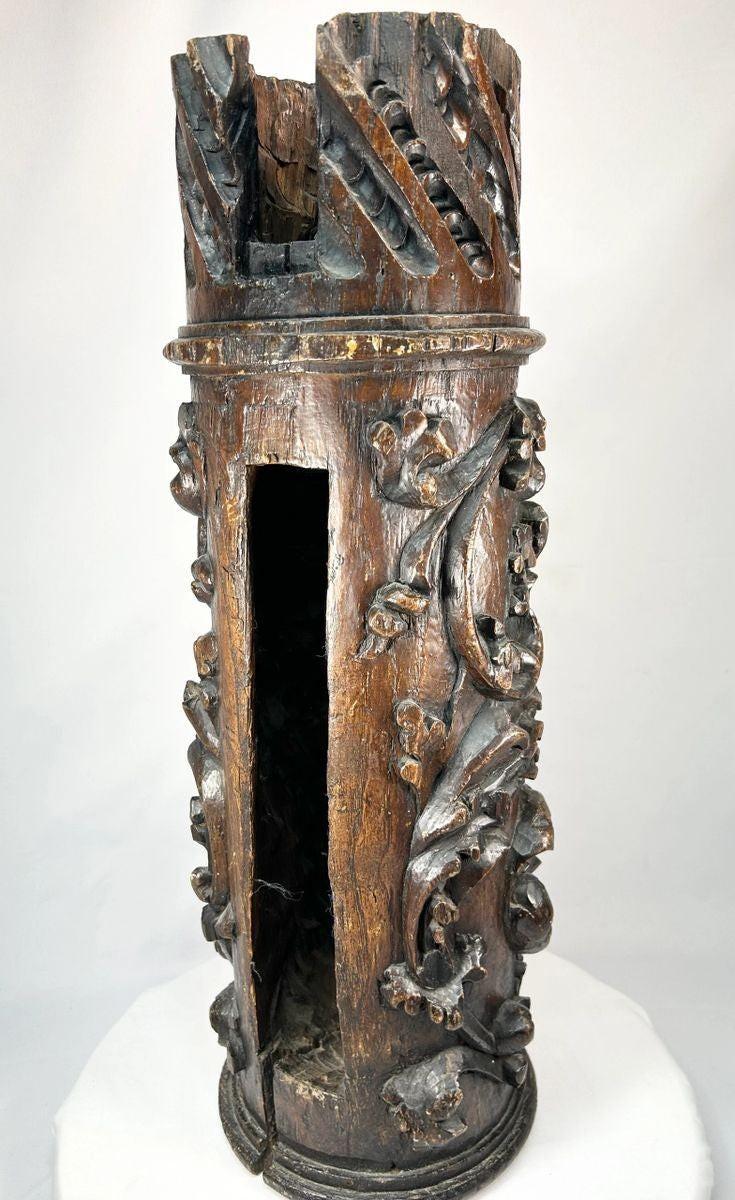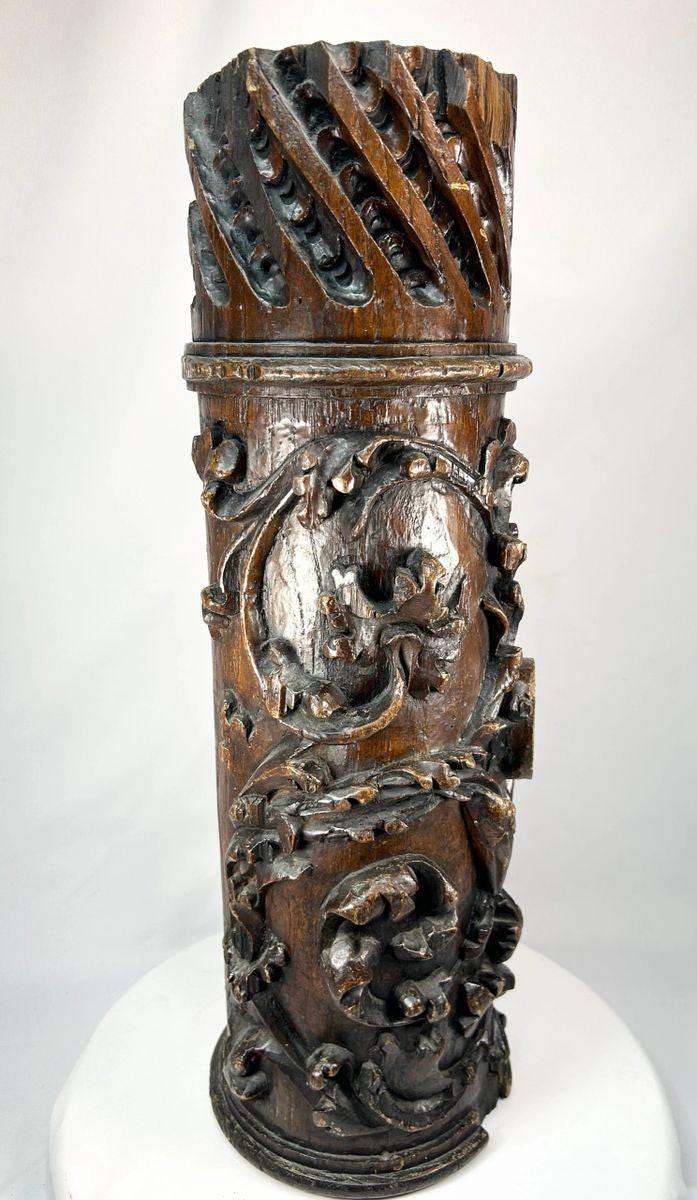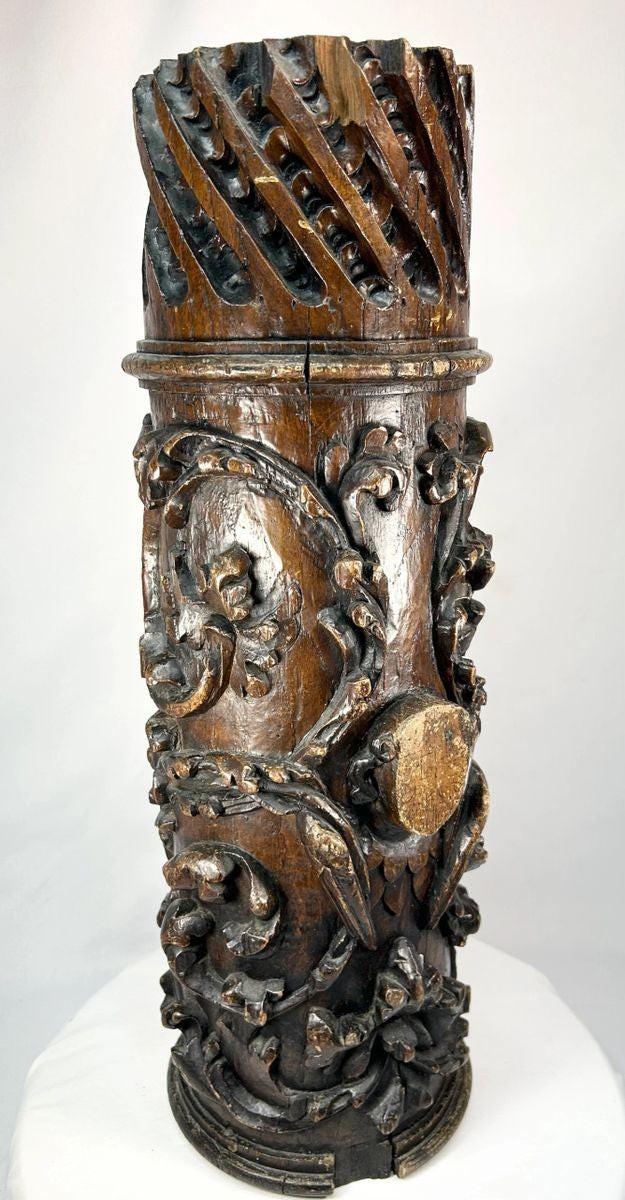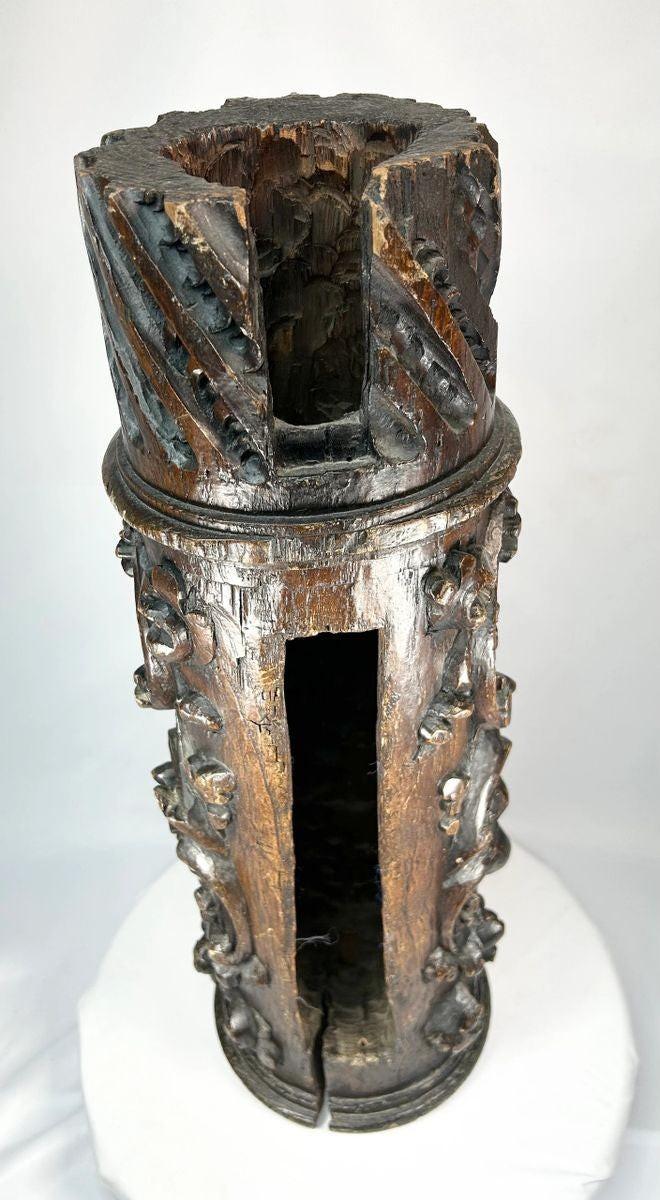Edo-Period Japanese Hand-Carved Temple Pillar Fragment | Circa 18th Century
Description
More
Less
Historical Context & Origin
Region: Japan
Material: Hand-carved wood
Period: Edo Period, 18th Century
Description
This exceptional hand-carved wooden fragment originates from Japan and was once part of an ornate temple, shrine, or noble residence. It reflects the flourishing craftsmanship of the Edo Period (1603–1868), when elaborate woodwork adorned both religious and aristocratic architecture. Featuring deep relief floral carvings, scrolling vines, and geometric latticework, the piece embodies the harmony between nature and architecture that defines Japanese aesthetics. Its aged surface patina, with visible cracks and weathered textures, speaks to centuries of history and cultural continuity.
Features
- Deeply carved floral motifs, scrolling vines, and latticework
- Symbolic ornamentation representing prosperity, longevity, and spiritual connection
- Rich, dark patina with age-related wear enhancing its authenticity
- Likely from a temple, shrine, or samurai estate structure
Cultural Significance
In Japanese tradition, carved wooden pillars and fragments symbolized the connection between heaven and earth, imbuing sacred spaces with both structural and spiritual meaning. Architectural elements such as this were not merely decorative but also emblematic of prosperity, divine order, and cultural refinement. Today, they serve as treasured survivals of Edo-period artistry, sought after by collectors, museums, and designers alike.
Condition
The piece remains structurally stable with age-related wear, including cracks, surface losses, and weathering consistent with its 18th-century origins. Despite this, the carved details are well-preserved, and the patina enhances its visual depth and historical authenticity.
Dimensions (approximate)
Height: 22 in
Width: 6 in
Age
Approximately 250 years old
Learn More
Discover More About The Edo Period From The Asian Art Museum: Historical Background of the Edo Period (1615–1868)
Browse Our Curated Edo-Period Collection
Description
Historical Context & Origin
Region: Japan
Material: Hand-carved wood
Period: Edo Period, 18th Century
Description
This exceptional hand-carved wooden fragment originates from Japan and was once part of an ornate temple, shrine, or noble residence. It reflects the flourishing craftsmanship of the Edo Period (1603–1868), when elaborate woodwork adorned both religious and aristocratic architecture. Featuring deep relief floral carvings, scrolling vines, and geometric latticework, the piece embodies the harmony between nature and architecture that defines Japanese aesthetics. Its aged surface patina, with visible cracks and weathered textures, speaks to centuries of history and cultural continuity.
Features
- Deeply carved floral motifs, scrolling vines, and latticework
- Symbolic ornamentation representing prosperity, longevity, and spiritual connection
- Rich, dark patina with age-related wear enhancing its authenticity
- Likely from a temple, shrine, or samurai estate structure
Cultural Significance
In Japanese tradition, carved wooden pillars and fragments symbolized the connection between heaven and earth, imbuing sacred spaces with both structural and spiritual meaning. Architectural elements such as this were not merely decorative but also emblematic of prosperity, divine order, and cultural refinement. Today, they serve as treasured survivals of Edo-period artistry, sought after by collectors, museums, and designers alike.
Condition
The piece remains structurally stable with age-related wear, including cracks, surface losses, and weathering consistent with its 18th-century origins. Despite this, the carved details are well-preserved, and the patina enhances its visual depth and historical authenticity.
Dimensions (approximate)
Height: 22 in
Width: 6 in
Age
Approximately 250 years old
Learn More
Discover More About The Edo Period From The Asian Art Museum: Historical Background of the Edo Period (1615–1868)
Browse Our Curated Edo-Period Collection
You May Also Like


























